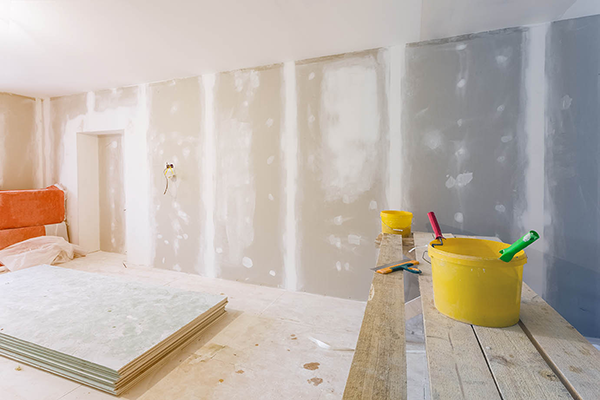If you could maintain drywall strength while shaving off 20 to 30 percent of the weight, who wouldn’t beat a path to your door to buy it? Since 2010, lightweight drywall stormed onto the market to give relief from the heft of standard wallboards. First developed by United States Gypsum Corporation (USG) and branded Sheetrock UltraLight®, soon, other gypsum board producers followed suit with their own products. But the intervening years since the first roll-out have garnered a mixed reaction from professionals and amateurs alike.
What is Ultralight Drywall?
First, “ultralight” drywall may serve as a generic descriptor for unusually lighter gypsum wallboard, but to be fair, USG claimed UltraLight® for their brand name. Let’s just use “lightweight” or “light” drywall to avoid difficulties akin to the tissue/Kleenex® and cola/Coke® controversies.
Apparently, gypsum manufacturers value their patented processes to reduce wallboard weight higher than gold and precious gems. Efforts to obtain even a hint of the special ingredients or mechanical procedures have been universally rebuffed. However, known scientific principles suggest that they entrain more air into the slurry to displace a portion of the gypsum mix. By using new, specialized foaming chemicals to entrain both large and small air pockets in proprietary ratios, manufacturers can retain board strength while cutting poundage.
While the specifications for each producer’s light drywall run the gamut, it’s safe to say that compared to standard 1/2-inch, 4- by 8-foot boards, lightweight drywall comes out 20 to 30 percent lighter. The light counterpart to a 57-pound standard board may dip the scales to 44 pounds. If you install or ship drywall for a living, that 13-pound reduction sounds pretty good.
Pros of Lightweight
Obviously, hefting less weight around all day can increase a builder’s productivity. At the same time, it may also spare installer injury events. With weight-based shipping costs diminished, general contractors save yet more. Plus, relatively unskilled homeowners find their DIY projects easier to complete.
Other benefits of lightweight drywall include:
- Use on walls and ceilings where codes do not require fire-rated material*
- Use on ceilings with studs up to 24 inches on-center
- Easy installation on steel stud framing
- Possibly improved score and snap
- More environmentally friendly
- May contribute to LEEDS certification
*Most producers have lightweight formulations that meet fire ratings, as well.
Cons of Lightweight
On the downside, some complaints have surfaced on contractor opinion sites. However, it pays to bear in mind that sometimes making slight changes in product or installation methodology can generate an unfair negative mindset. Naturally, not all light drywall brands are created equal. Most drywallers seem to prefer the USG brand, but all makers continue to improve their products, thus old complaints may no longer apply.
Some disadvantages of light drywall include:
- Increased sound transmission
- Slight increase in brittleness
- Easier edge breakage
- Possibly more difficult to score and snap
- Higher cost
Lightweight wallboards may offer the solutions general contractors and homeowners desire, but you may need to try different brands to find the product that suits your goals best. The increased price per board may be offset by easier handling and lower shipping costs.
Conclusions
End users will ultimately decide the future of lightweight drywall. While lighter boards have earned pride of place in the market, they have yet to crowd out standard drywall options. Every job has its specific drywall specifications, and lightweight drywall may or may not fill those needs. Where fire ratings and sound mitigation take precedence, your best bet remains with standard drywall unless you’ve had the luxury of testing several brands first. In other applications — particularly large commercial and very small residential renovations — contractors may find that light wallboards are well worth the extra cost for their back-saving properties and smaller transportation costs.
At the end of the day, it’s great to have lightweight options. Today, they may not serve your purposes, but tomorrow, they may prove the best thing since the invention of drywall.


That was well written, Thank you for the pertinent information.